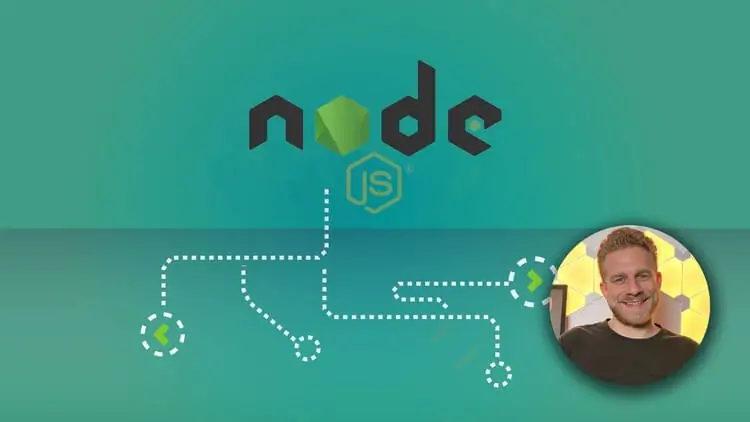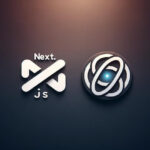Master NodeJS – The Complete Guide & Deno.js, build REST APIs with Node.js, GraphQL APIs, add Authentication, use MongoDB, SQL & much more!
What you will learn:
- Work with one of the most in-demand web development programming languages
- Learn the basics as well as advanced concepts of NodeJS in great detail
- Build modern, fast, and scalable server-side web applications with NodeJS, databases like SQL or MongoDB, and more
- Understand the NodeJS ecosystem and build server-side rendered apps, REST APIs, and GraphQL APIs
- Get a thorough introduction to DenoJS
Requirements of NodeJS:
- General knowledge of how the web works is recommended but not a must-have
- Basic JavaScript knowledge is strongly recommended but could be picked up whilst going through the course
- NO NodeJS knowledge is required!
Table of Contents
Description of NodeJS:
- NodeJS course was refreshed to likewise remember areas for Deno.js – notwithstanding over 30 hours of substance on Node.js!
Node.js is presumably THE most well-known and present-day worker-side programming language you can jump into nowadays!
Node.js engineers are popular and the language is utilized for everything from customary web applications with worker-side delivered sees over REST APIs as far as possible up to GraphQL APIs and continuous web administrations. Also its applications in formwork processes for tasks, everything being equal.
This course will show you the entirety of that! Without any preparation with zero, earlier information is accepted. However, in the event that you do bring some information, you’ll obviously have the option to rapidly bounce into the course modules that are generally intriguing to you.
This is what you will realize in this course:
- Node.js Basics and Basic Core Modules
- Parsing Requests and Sending Responses
- Delivering HTML Dynamically (on the Server)
- Utilizing Express.js
- Working with Files and creating PDFs on the Server (on the fly)
- Document Up-and Download
- Utilizing the Model-View-Controller (MVC) Pattern
- Utilizing Node.js with SQL (MySQL) and Sequelize
- Utilizing Node.js with NoSQL (MongoDB) and Mongoose
- Working with Sessions and Cookies
- Client Authentication and Authorization
- Sending E-Mails
- Approving User Input
- Information Pagination
- Taking care of Payments with Stripe.js
- Building REST APIs
- Confirmation in REST APIs
- Record Upload in REST APIs
- Building GraphQL APIs
- Validation in GraphQL APIs
- Record Upload in GraphQL APIs
- Building a real-time Node.js App with Websockets
- Robotized Testing (Unit Tests)
- Conveying a Node.js Application
- Utilizing TypeScript with Node.js
- Investigating Deno.js
- Furthermore, Way More!
Does this resemble a ton of substance? It positively is!
This is certainly not a short course however it is the “Finished Guide” on Node.js all things considered. We will plunge into a great deal of themes and we will not simply start to expose what’s underneath.
We will likewise not simply stroll through exhausting hypotheses and a few slides. All things considered, We will fabricate two significant undertakings: An online shop (counting checkout + installments) and a blog.
All subjects and highlights of the course will be appeared and be utilized in these tasks and you will in this way find out about them in a practical climate.
Is this course for you?
On the off chance that you got no Node.js experience, you will love this course since it begins with zero information expected. It’s the ideal course to turn into a Node.js designer.
On the off chance that you got a fundamental Node.js experience, this course is additionally an ideal match since you can experience the essential modules rapidly and you will profit by all the profound plunges and progressed points the course covers.
Is it accurate to say that you are a high-level Node.js client? Check the educational program at that point. Perhaps you found no other course that tells the best way to utilize SQL with Node.js. Or then again you’re keen on GraphQL. Odds are, that you will get a ton of significant worth out of this course, as well!
Essentials
- NO Node.js information is needed by any means!
- NO other programming language information (other than JavaScript, see next point) is required
- Essential JavaScript information is expected, however – you ought to at any rate be eager to get it while experiencing the course. A JS boost module exists to bring you up to the most recent sentence structure rapidly
- Essential HTML + CSS information helps yet isn’t needed
Who this course is for:
- Beginner or advanced web developers who want to dive into backend (server-side) development with NodeJS
- Everyone who’s interested in building modern, scalable and high-performing web applications
- Experienced NodeJS developers who want to dive into specific features like using GraphQL with NodeJS
The course content of NodeJS:
Introduction of NodeJS:
- What is Node.js?
- Join our Online Learning Community
- Installing Node.js and Creating our First App
- Understanding the Role & Usage of Node.js
- Course Outline
- How To Get The Most Out Of The Course
- Working with the REPL vs Using Files
- Using the Attached Source Code
Optional: JavaScript – A Quick Refresher:
- Module Introduction
- JavaScript in a Nutshell
- Refreshing the Core Syntax
- let & const
- Understanding Arrow Functions
- Working with Objects, Properties & Methods
- Arrays & Array Methods
- Arrays, Objects & Reference Types
- Understanding Spread & Rest Operators
- Destructuring
- Async Code & Promises
- Template Literals
- Wrap Up
- Useful Resources & Links
Understanding the Basics:
- Module Introduction
- How The Web Works
- Creating a Node Server
- The Node Lifecycle & Event Loop
- Controlling the Node.js Process
- Understanding Requests
- Sending Responses
- Request & Response Headers
- Routing Requests
- Redirecting Requests
- Parsing Request Bodies
- Understanding Event-Driven Code Execution
- Blocking and Non-Blocking Code
- Node.js – Looking Behind the Scenes
- Using the Node Modules System
- Wrap Up
- Time to Practice – The Basics
- Useful Resources & Links
Improved Development Workflow and Debugging:
- Module Introduction
- Understanding NPM Scripts
- Installing 3rd Party Packages
- Global Features vs Core Modules vs Third-Party Modules
- Using Nodemon for Autorestarts
- Global & Local npm Packages
- Understanding different Error Types
- Finding & Fixing Syntax Errors
- Dealing with Runtime Errors
- Logical Errors
- Using the Debugger
- Restarting the Debugger Automatically After Editing our App
- Debugging Node.js in Visual Studio Code
- Changing Variables in the Debug Console
- Wrap Up
- Useful Resources & Links
Working with Express.js:
- Module Introduction
- What is Express.js?
- Installing Express.js
- Adding Middleware
- How Middleware Works
- Express.js – Looking Behind the Scenes
- Handling Different Routes
- Time to Practice – Express.js
- Parsing Incoming Requests
- Limiting Middleware Execution to POST Requests
- Using Express Router
- Adding a 404 Error Page
- Filtering Paths
- Creating HTML Pages
- Serving HTML Pages
- Returning a 404 Page
- Using a Helper Function for Navigation
- Styling our Pages
- Serving Files Statically
- Time to Practice – Navigation1 question
- Wrap Up
- Useful Resources & Links
Working with Dynamic Content & Adding Templating Engines:
- Module Introduction
- Sharing Data Across Requests & Users
- Templating Engines – An Overview
- Installing & Implementing Pug
- Outputting Dynamic Content
- Official Pug Docs
- Converting HTML Files to Pug
- Adding a Layout
- Finishing the Pug Template
- Avoiding an Error
- Working with Handlebars
- Converting our Project to Handlebars
- Adding the Layout to Handlebars
- Working with EJS
- Working on the Layout with Partials
- Wrap Up
- Time to Practice – Templating Engines
- [OPTIONAL] Assignment Solution
- Useful Resources & Links
The Model View Controller (MVC):
- Module Introduction
- What is the MVC?
- Adding Controllers
- Finishing the Controllers
- Adding a Product Model
- Storing Data in Files Via the Model
- Fetching Data from Files Via the Model
- Refactoring the File Storage Code
- Wrap Up
- Useful Resources & Links
Optional: Enhancing the App:
- Module Introduction
- Creating the Shop Structure
- Working on the Navigation
- Registering the Routes
- Storing Product Data
- Displaying Product Data
- Editing & Deleting Products
- Adding Another Item
- Useful Resources & Links
Dynamic Routes & Advanced Models:
- Module Introduction
- Preparations
- Applied Changes00:05
- Adding the Product ID to the Path
- Extracting Dynamic Params
- Loading Product Detail Data
- Rendering the Product Detail View
- Passing Data with POST Requests
- Adding a Cart Model
- Using Query Params
- Pre-Populating the Edit Product Page with Data
- Linking to the Edit Page
- Editing the Product Data0
- Adding the Product-Delete Functionality
- Deleting Cart Items08:11
- Displaying Cart Items on the Cart Page
- Deleting Cart Items
- Fixing a Delete Product Bug
- Wrap Up
- Useful Resources & Links
SQL Introduction:
- Module Introduction
- Choosing a Database
- NoSQL Introduction
- Comparing SQL and NoSQL
- Setting Up MySQL
- Connecting our App to the SQL Database
- Basic SQL & Creating a Table
- Retrieving Data
- Fetching Products
- Fetching Products – Time to Practice
- Inserting Data Into the Database
- Fetching a Single Product with the “where” Condition
- Wrap Up
- Useful Resources & Links
Wait 15 Second For Download This File For Free
if you find any wrong activities so kindly read our DMCA policy also contact us. Thank you for understand us…










